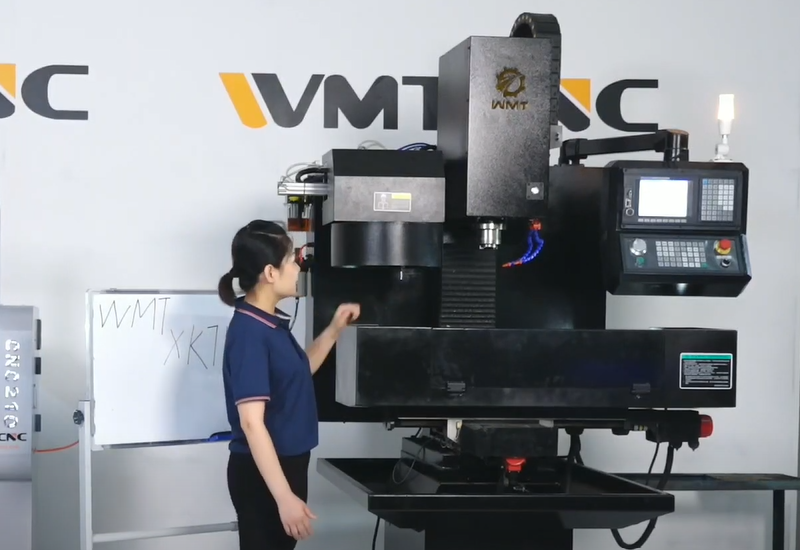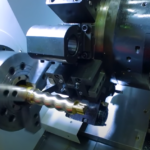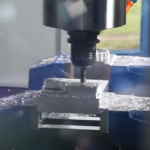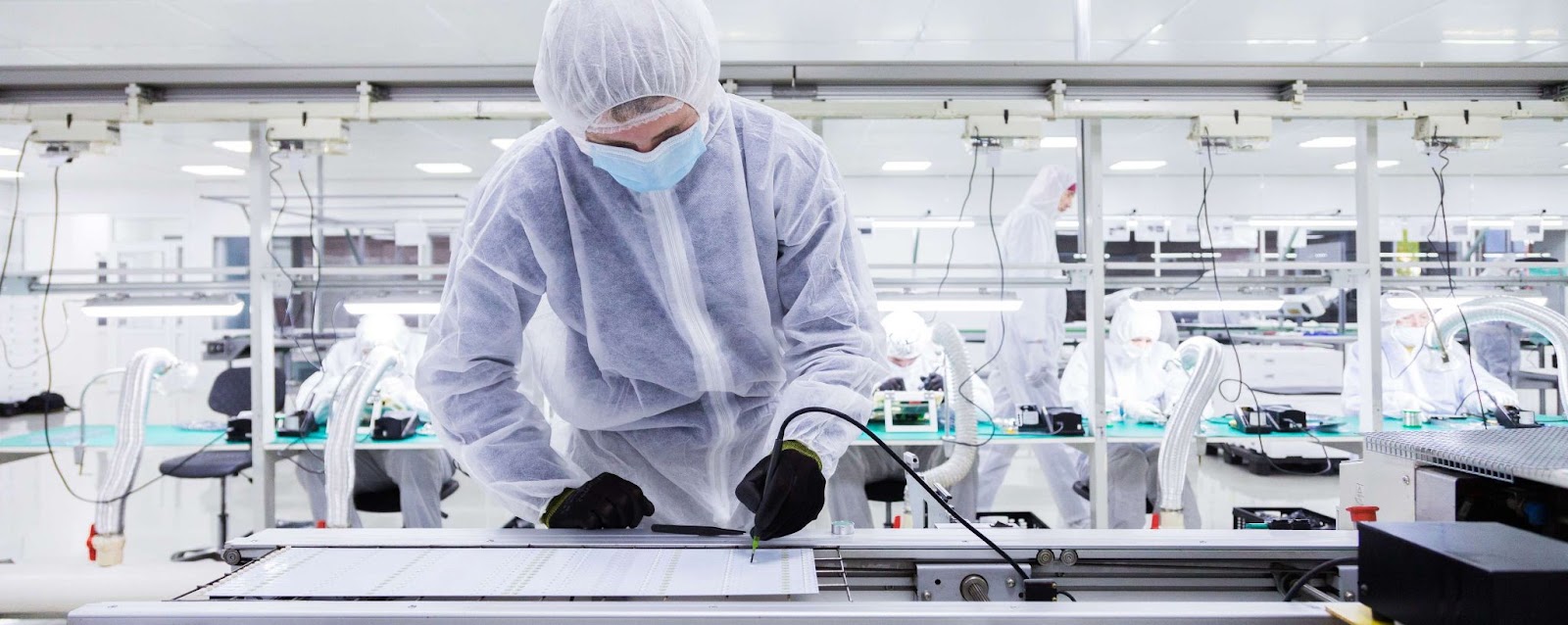CNC milling machines, which are controlled by computers, have changed the manufacturing business forever by allowing for the automatic fabrication of intricate and exact components. There is a wide variety of these multipurpose devices, each with its own set of skill sets and talents. In this post, we’ll take a look at the various CNC milling machines available and discuss their features, capabilities, and best uses.
1. Vertical Milling Machines
To maximize the effectiveness and quality of machined components, familiarity with the subtleties of Vertical Milling Machines is crucial. Due to their extraordinary adaptability and accuracy, these cutting-edge equipment have revolutionized the machining business. This article will provide a thorough introduction to vertical milling machines by exploring the inner workings of three distinct models: 3-axis mills, 4-axis mills, and 5-axis mills.
3-Axis Mills
The simplest type of computer numerically controlled mill is the 3-axis mill. This device is unique due to the orientation of its cutting tool, which is vertical. Because of the way it’s constructed, movement is guaranteed in the X, Y, and Z axes. The limitations of its 3-axis design, however, mean that it is often limited in the kind of parts it can make. The key features are outlined below.
| Features | Details |
|---|---|
| Axis of Motion | Three axes – X, Y, and Z. |
| Tool Positioning | Vertical. |
| Advantages | Simplicity and cost-effectiveness. |
| Limitations | Complexity of parts it can produce may be limited. |
4-Axis Mills
The 4-Axis Mills are an improvement over the 3-Axis Mills. They typically feature a rotating table, which adds a second axis of rotation. The ability to rotate the workpiece thanks to this auxiliary axis is a huge help during the cutting process.
| Features | Details |
|---|---|
| Axis of Motion | Four axes – X, Y, Z, and an added rotational axis. |
| Tool Positioning | Vertical. |
| Advantages | provides an extra axis of rotation for performing difficult machining tasks. |
| Limitations | Costs more and calls for expert-level programming expertise. |
5-Axis Mills
The 5-Axis Mill is state-of-the-art machinery for milling. Unlike the 3-Axis Mill, they feature an additional two rotatable axes that permit the cutting tool to approach the workpiece from any direction. This incredible configuration breaks free from the limitations of its simpler competitors, vastly expanding the range of possible machining applications.
| Features | Details |
|---|---|
| Axis of Motion | Five axes – X, Y, Z, and two additional rotational axes. |
| Tool Positioning | Vertical. |
| Advantages | enables the precise machining of elaborate forms and patterns. |
| Limitations | Complex knowledge of programming and use is expected. Costs are high both initially and over time. |
2. Horizontal Milling Machines
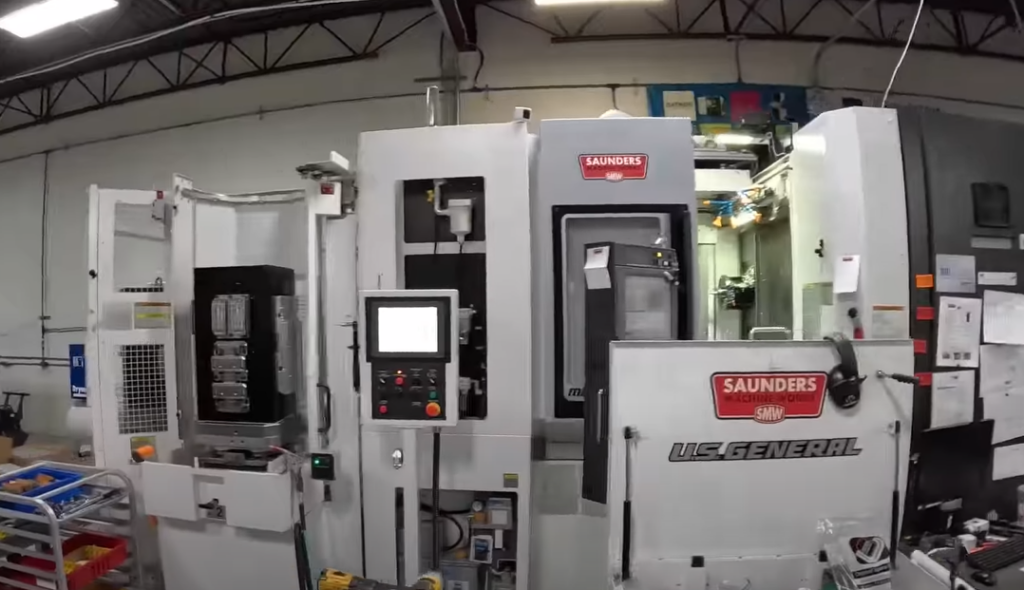
The use of a horizontal milling machine has its own set of benefits and possibilities. These machines have become indispensable in today’s production sectors due to their capacity to do complex jobs with great accuracy. The three most common varieties of horizontal milling machines are described in detail here: the Plain Mill, the Universal Mill, and the Production Mill.
Plain Mills
Plain Mills are the pinnacle of efficiency, with their plain design and powerful functioning. These machines excel at creating slots and grooves because the cutting tool is supported by an arbour that runs horizontally. The main characteristics and technical details of Plain Mills are summarized in the table below.
| Features | Details |
|---|---|
| Tool Mounting | Mounted on a horizontal arbor. |
| Suitability | Ideal for machining grooves and slots. |
| Advantages | Easy to learn and use, cheap, and useful for certain jobs. |
| Limitations | Inflexible; only suitable for a narrow range of machining applications. |
Universal Mills
The Universal Mills are characterized by their adaptability. They improve upon the original concept of Plain Mills by adding a swivel cutter. Because of the adjustable angle of this swivel cutter, a wider variety of components can be made.
| Features | Details |
|---|---|
| Tool Mounting | a horizontally positioned swivel cutter on an arbour. |
| Suitability | Perfect for making complex assemblies with a wide range of angles. |
| Advantages | Extremely adaptable; can handle a wide variety of machining needs. |
| Limitations | Much more costly and labor-intensive. |
Production Mills
Production Mills are ideal for mass production since they were developed with efficiency in mind. They typically have a number of different cutters available, allowing for simultaneous milling. This attribute drastically shortens the manufacturing process and increases productivity.
| Features | Details |
|---|---|
| Tool Mounting | Equipped with multiple cutters on a horizontal arbor. |
| Suitability | Ideal for high-volume production. |
| Advantages | Increases productivity by facilitating simultaneous machining. |
| Limitations | High initial cost, demands advanced programming skills. |
3. Turret Milling Machines
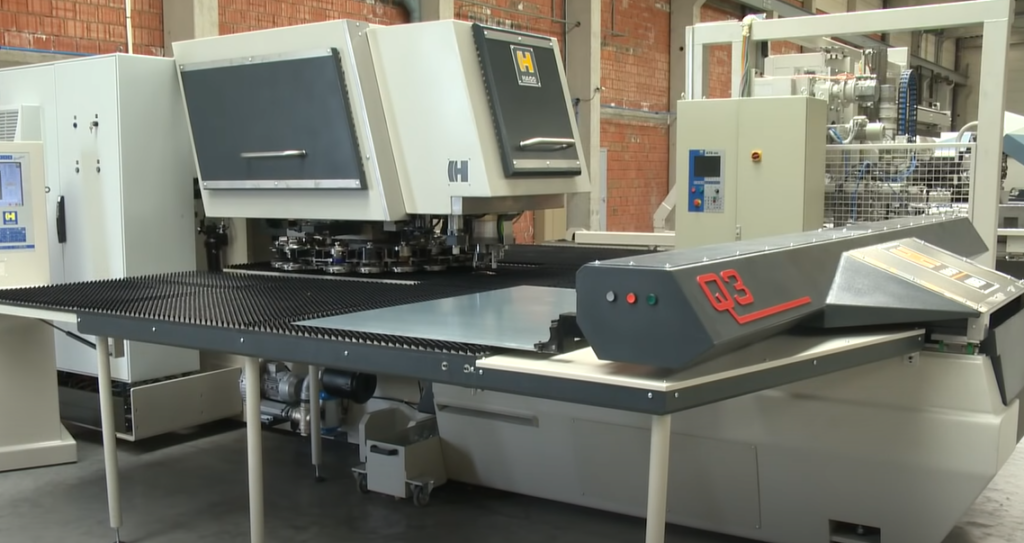
As we delve farther into the vast realm of milling machines, we come upon a crucial component of precision manufacturing: Turret Milling Machines. Because of their increased functionality and versatility, they play an important part in many types of machining. We’ll get into the nitty-gritty of two types of Turret Milling Machines—Knee Mills and Fixed Bed Mills—right now.
Fixed Bed Mills
The table on a fixed bed mill doesn’t move while the spindle moves in both the horizontal and vertical directions. These machines, which tend to be on the bulkier side, are built to handle demanding tasks that call for reliable, sturdy machining.
Let’s take a closer look at what makes Fixed Bed Mills so special.
| Features | Details |
|---|---|
| Table Movement | The table is stationary. |
| Spindle Movement | Moves along the X and Y axes. |
| Suitability | Ideal for heavy-duty jobs. |
| Advantages | Larger parts can be worked on thanks to the superior stability and rigidity. |
| Limitations | Inflexible, needing a greater physical space and more money up front. |
Knee Mills
However, Knee Mills provide an unprecedented range of motion and accuracy. These mills, so called because of their unique adjustable ‘knee’ design, consist of a table that travels along the Z-axis and a spindle that moves along the X and Y axes. Because of this special quality, they are perfect for a wide range of machining applications.
We’ll take a close look at what makes Knee Mills so special.
| Features | Details |
|---|---|
| Table Movement | The table can be moved up and down (Z-axis). |
| Spindle Movement | Moves along the X and Y axes. |
| Suitability | Known for flexibility and precision. |
| Advantages | Modular, flexible, and capable of performing a wide range of machining operations. |
| Limitations | Lacking stiffness for demanding jobs, and requiring expert handling. |
4. Bed Milling Machines
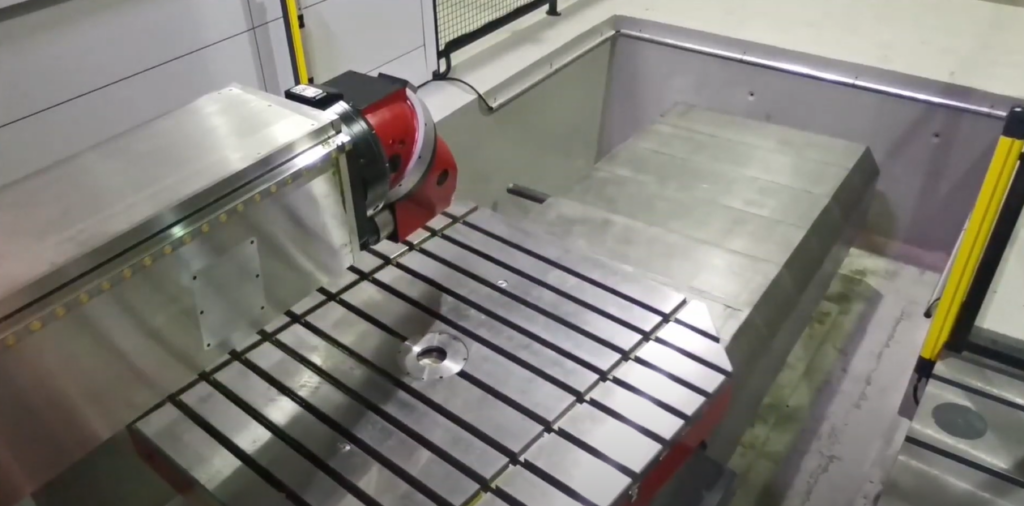
The term “bed” refers to the table or surface upon which the workpiece lies in a bed milling machine. The table on these milling machines does not move, unlike some others. On the other hand, the cutter is swivel-mounted, allowing for greater precision in its operation. Large or intricately shaped items are often machined using this setup.
Let’s analyze what makes Bed Milling Machines so special.
| Features | Details |
|---|---|
| Table | Stationary. |
| Cutter | Mounted on a movable spindle. |
| Suitability | Optimal for large parts or complex shapes. |
| Advantages | Superb accuracy and stiffness; best suited to demanding applications. |
| Limitations | less mobile, needs a lot of space, and more money up front. |
Detailed Features
- Stationary Table: When cutting large or heavy items, the immovable table’s rigidity and stability are important;
- Movable Spindle: The cutter is mounted on a spindle that may rotate and move in several dimensions. This improves command and precision, especially when working with intricate designs;
- High Precision: The accuracy of bed milling machines is widely praised since it allows manufacturers to produce complex components with great tolerances;
- Heavy-Duty Applications: Bed Milling Machines are ideal for demanding machining jobs due to their robust build and solid design.
Conclusion
CNC milling machines have significantly broadened the scope of manufacturing by offering a range of options that were previously inaccessible. Having a comprehensive understanding of the distinctions between these options will enable you to make an informed decision based on your specific requirements, regardless of whether you are dealing with straightforward or intricate elements, large or small quantities, or atypical material characteristics.
Refer to the provided instructional video to gain a deeper understanding of the practical applications and functionalities of these tools in real-life scenarios.
FAQ
The key differentiation lies in the orientation of the spindle axis. Vertical milling machines boast a vertically aligned milling spindle, while their horizontal counterparts feature a horizontally aligned milling spindle.
The 5-axis vertical milling machine takes center stage with its unparalleled flexibility. Equipped with a cutting tool that can approach the workpiece from virtually any angle, this advanced machinery stands as the epitome of versatility, empowering the creation of intricate shapes with utmost precision.
Comparing bed milling machines to knee mills, the former generally excels in stiffness and accuracy. However, when it comes to making the best choice, it all boils down to the specific requirements of the task at hand.
A 5-axis machine surpasses a 3-axis machine in its ability to fabricate highly intricate parts, thanks to its enhanced capabilities. Moreover, it often completes the work in a single setup, a feat that would demand multiple configurations on a 3-axis machine. This efficiency and versatility make the 5-axis machine a formidable choice for complex manufacturing tasks.
